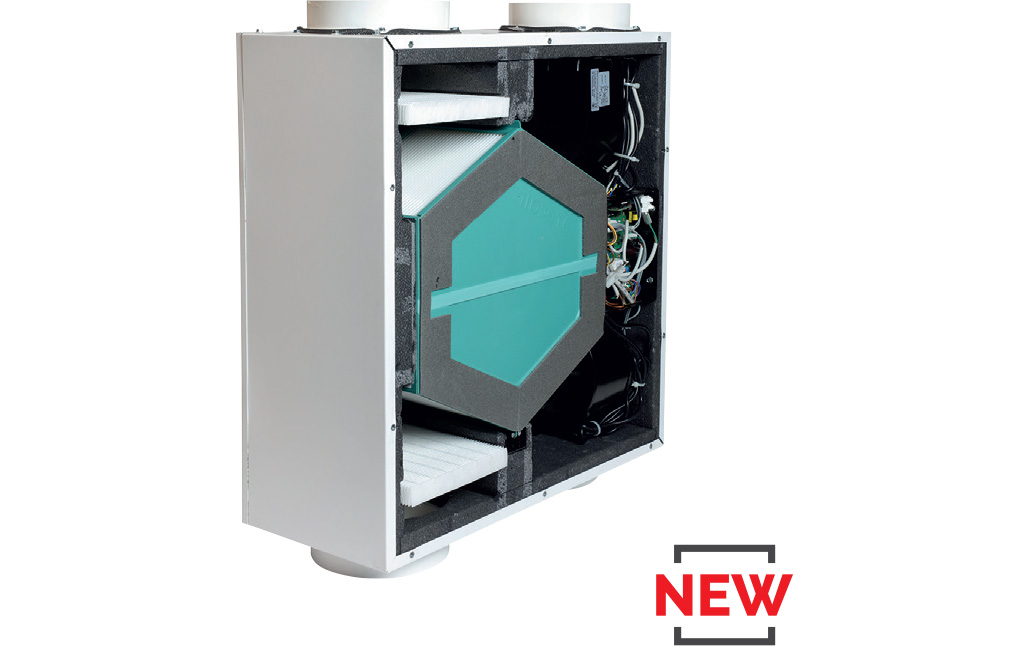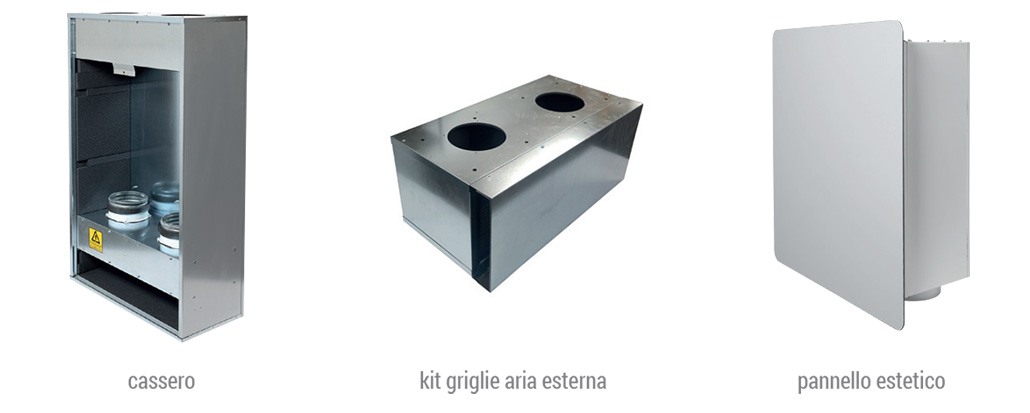Heat recovery ventilation is a technical solution that combines air exchange, hygiene, comfort, and energy saving in an efficient way. The intake of outdoor air through ventilation not only improves indoor air quality but can also enhance hygiene and provide health benefits, as it reduces the contaminants present in the room through dilution and filtration.
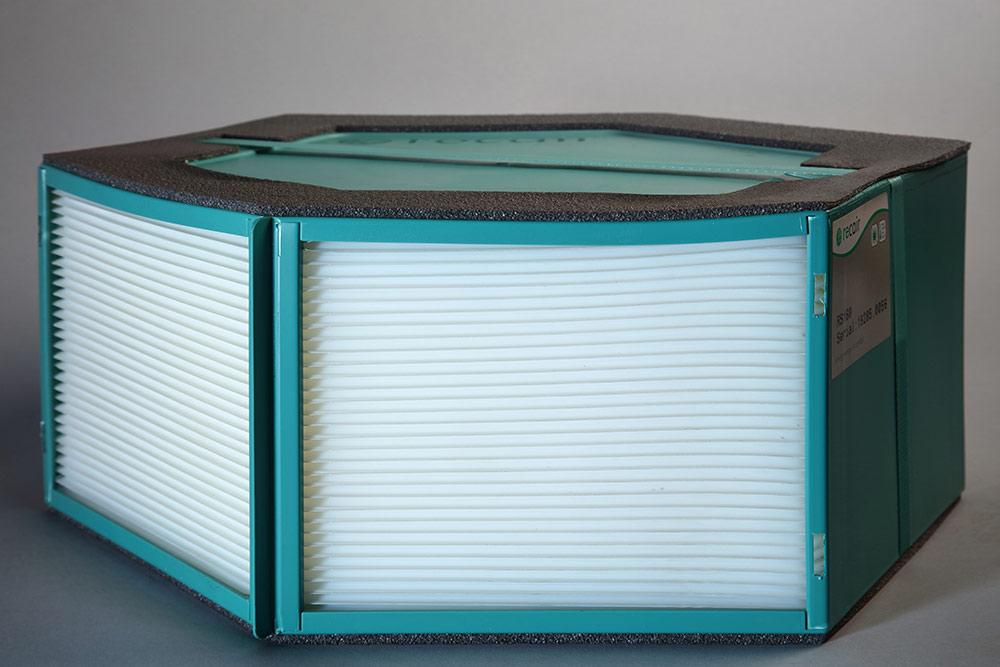
The benefits in terms of hygiene and health are many: control of indoor pollutants; less pollutants from the outside (particulates); no proliferation of mold caused by air humidity; healthy and pleasant indoor climate day and night; better conditions for individuals with allergies or breathing problems. Plus, the control of indoor air, as largely experienced during the pandemic, drastically reduces the risk of viral contagion.
When it comes to energy saving and environment, the use of HRVs enhances: the containment of thermal dispersions; smaller sizing of heating and cooling power; efficient use of energy and related reduction of polluting emissions in the atmosphere; better energy performance of the building which leads to an increased and valorized market value.
Our dual-flow ventilation units, that is the heat recuperators, provide uninterrupted and autonomous air exchange in adjacent spaces through special ducts, by extracting and radiating foul air while supplying exchange air with heat recovery.
The core of the recuperator: the static exchanger with countercurrent crossflow for heat recovery (also available as enthalpic exchanger for high levels of sensible and latent energy recovery).
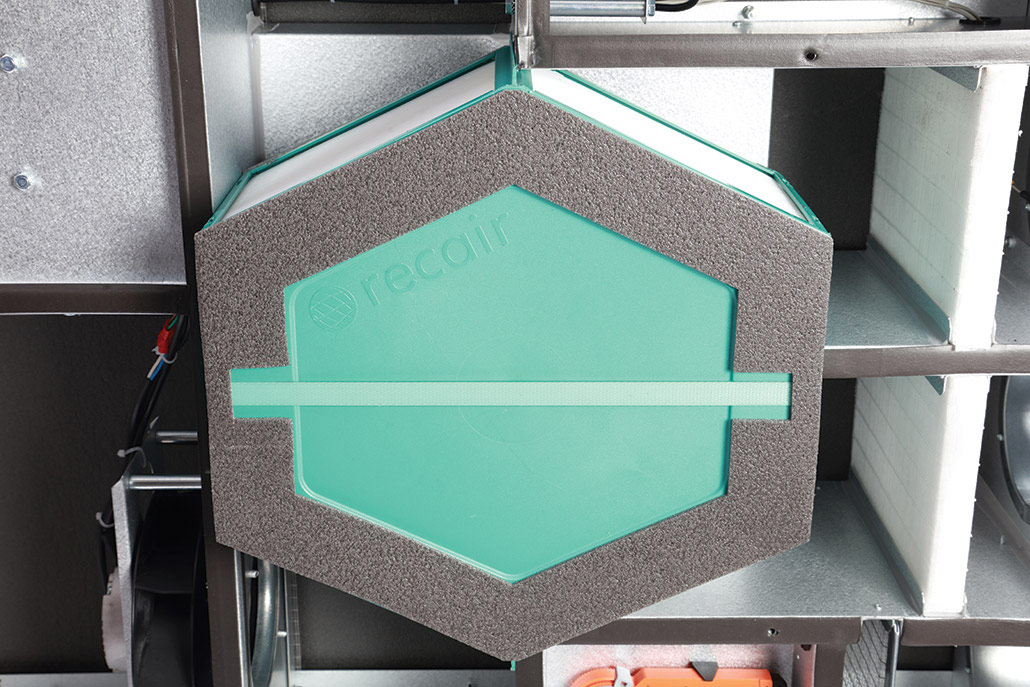
static exchanger with countercurrent crossflow for heat recovery
In addition to HRV, air treatment is also available as an optional (dehumidification with or without sensible integration) for an ideal pairing of radiant systems. The range includes recuperators with dehumidification/thermodynamic integration (with integrated cooling circuit, KHRD) and with dehumidification and hydronic integration (with no cooling circuit, coil for connection to the heating/cooling system included, KHRW).
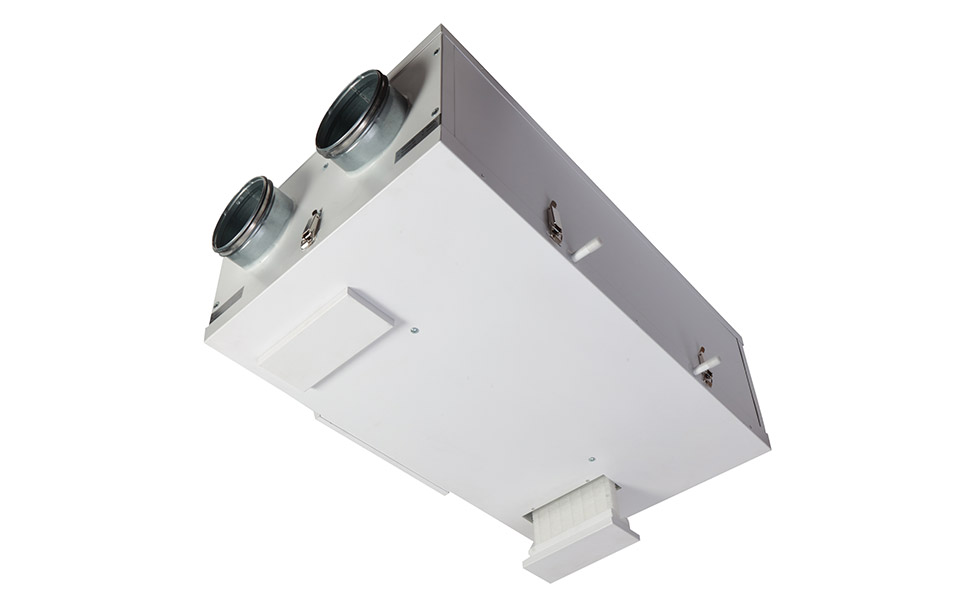
Heat recovery ventilation, dehumidification, and air treatment with modulating BLDC compressor for radiant panel applications. Wall-mount/floor horizontal or vertical installation.
Particularly fit for residential and commercial units or collective residential buildings; plug-and-play included for quicker and easier installation.
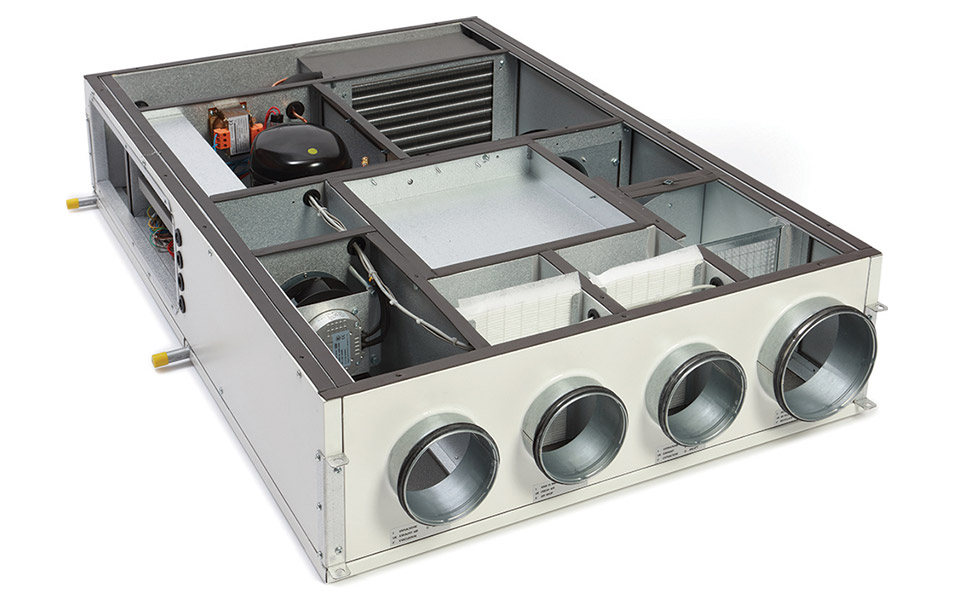
Thermodynamic heat recuperator (KHRD, horizontal version)
Thanks to the inverter compressor and the dedicated control algorithm, the unit provides:
It can work with much lower flow rates compared to past versions, thus enabling direct connection to the radiant manifold with no need of dedicated lines.
As it can dehumidify at reduced flow rates, the volume of treated air can be greatly limited compared to traditional systems, thus improving the users’ comfort in line with the principle of radiant systems and with the least possible convective currents;
In case of need, it increases the power to restore the room conditions, for example at startup of the system or with heavy thermal loads;
It prevents phenomena such as lack of water or low delivery flow rates by monitoring the working temperature of the compressor;
The inverter compressor controls the cooling power by monitoring the room temperature. The air will be treated at all times but as soon as the comfort conditions are met, the delivery air will be warmer and more enjoyable;
The special cooling circuit runs on less cooling fluid with no need of a dual condenser
The dehumidification power does not depend on the water temperature: should the temperature rise, the cooling circuit will maintain its capacity. The autonomy of its water temperatures makes the generator more efficient.
Small duct-type dual-flow ventilation unit, for horizontal or vertical installation in single residential units or apartments with low energy demands.
Horizontal surface mounting on boiler room ceiling or inside suspended ceilings.
Vertical surface mounting on wall (with optional application of a special covering panel, including fitting brackets on the unit) or flush mounting through a special cabinet (with optional external air grid kit).
